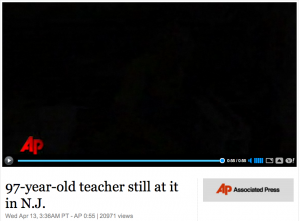Last week, two 14-year-old girls hung themselves in a suicide pact after being victims of bullying at their middle school. One of the girls, Haylee Fentress, had reached out to her family about being picked on for being overweight and having red hair. She was so self-conscious of her body weight that she wouldn’t eat in public.
The other girl, Paige Moravetz, had recently been expelled after standing up for Haylee in a school fight. It’s believed by their families that the separation caused by the expulsion was hard on the girls, and that she was upset about the consequences of defending herself and her friend.
Statistics show:
- There is noticeably more bullying in middle school than in high school (NCES).
- Emotional bullying is more prevalent than physical bullying (NCES).
- 61.6% of students who are bullied are picked on because of their looks or speech (U.S. News & World Report).
The findings of the first statewide study on bullying was published in the most recent issue of Morbidity and Mortality Weekly Report. Bullies, their victims, and kids who were both bullies and victims were far more likely to have been hurt by a family member or to have seen family violence than peers who weren’t involved in bullying, according to data from Massachusetts that was recently published by Centers for Disease Control and Prevention.
Bullies were found to be four times more likely to have been hurt by a family member than those who were neither a bully nor a victim of bullying.
These new findings reinforce the belief that education for anti-bullying begins at home. “These children are learning [violent behavior] in their families and behaving the same way in their relationships with their peers,” said psychologist Elizabeth Englander in a Boston Globe interview.
When the Massachusetts Department of Public Health added questions about bullying to the health survey of students, the researchers concluded: “Bullying is a pervasive public health problem requiring comprehensive solutions. Evidence suggests that classroom prevention programs alone in the United States often are unsuccessful in changing bullying behaviors.”
If your child is a bully or a victim of bullying you can seek help from your child’s school or contact their doctor or psychologist. If you’re an educator consider this statistic:Â Only 25% of students report that teachers intervene in bullying situations, while 71% of teachers believe they always intervene (www.bullybeware.com). How can you increase awareness in and out of school and become part of the solution in your community?
References:
- http://abcnews.go.com/US/suicide-pact-minnesota-eighth-graders-haylee-fentress-paige/story?
id=13411751
- http://www.bullyingstatistics.org/content/school-bullying.html
- http://www.highlands.k12.fl.us/~msdp/BullyingStatsResources.htm
- http://www.npr.org/blogs/health/2011/04/22/135608823/many-bullies-get-pushed-around-at-home















